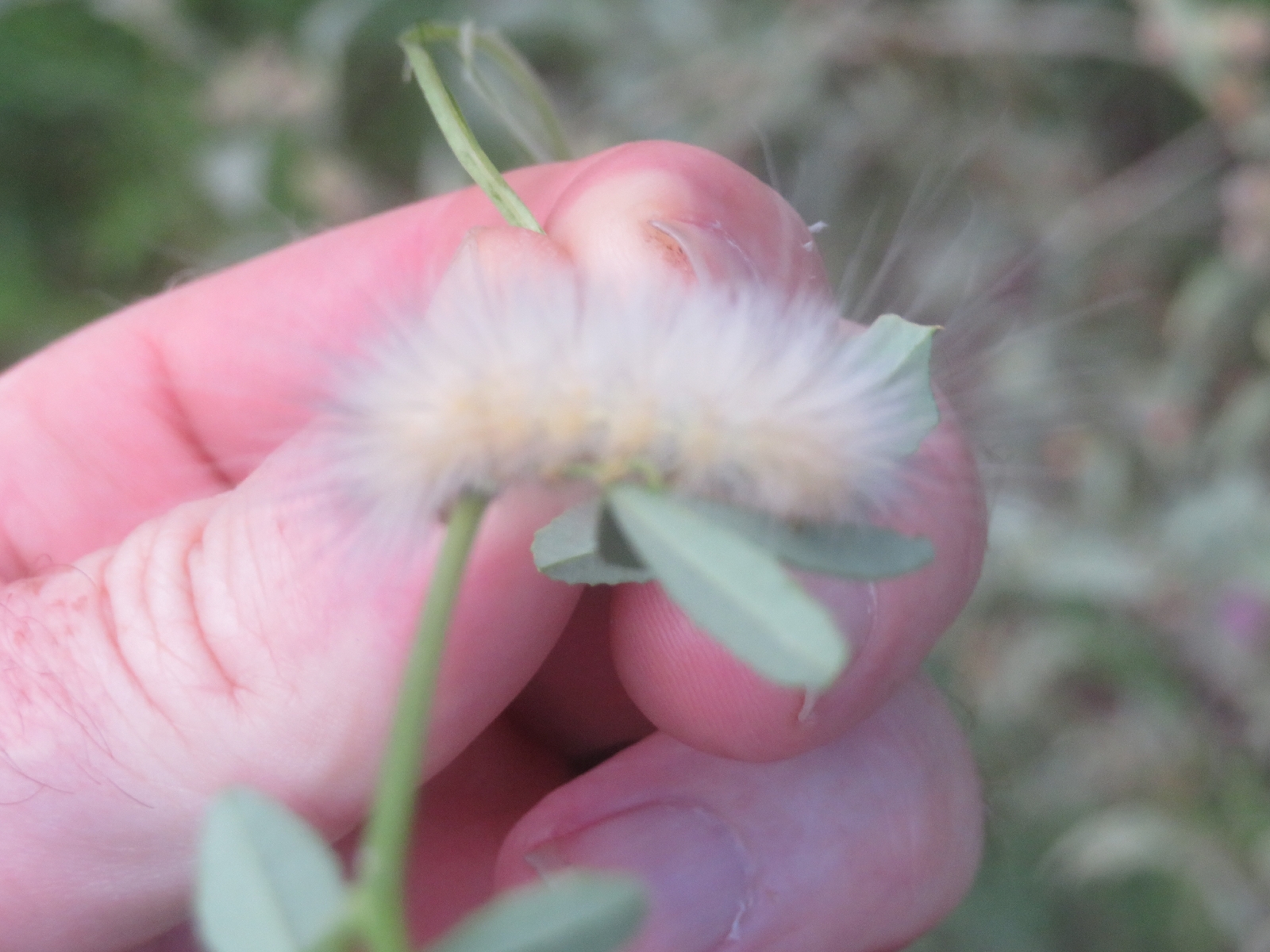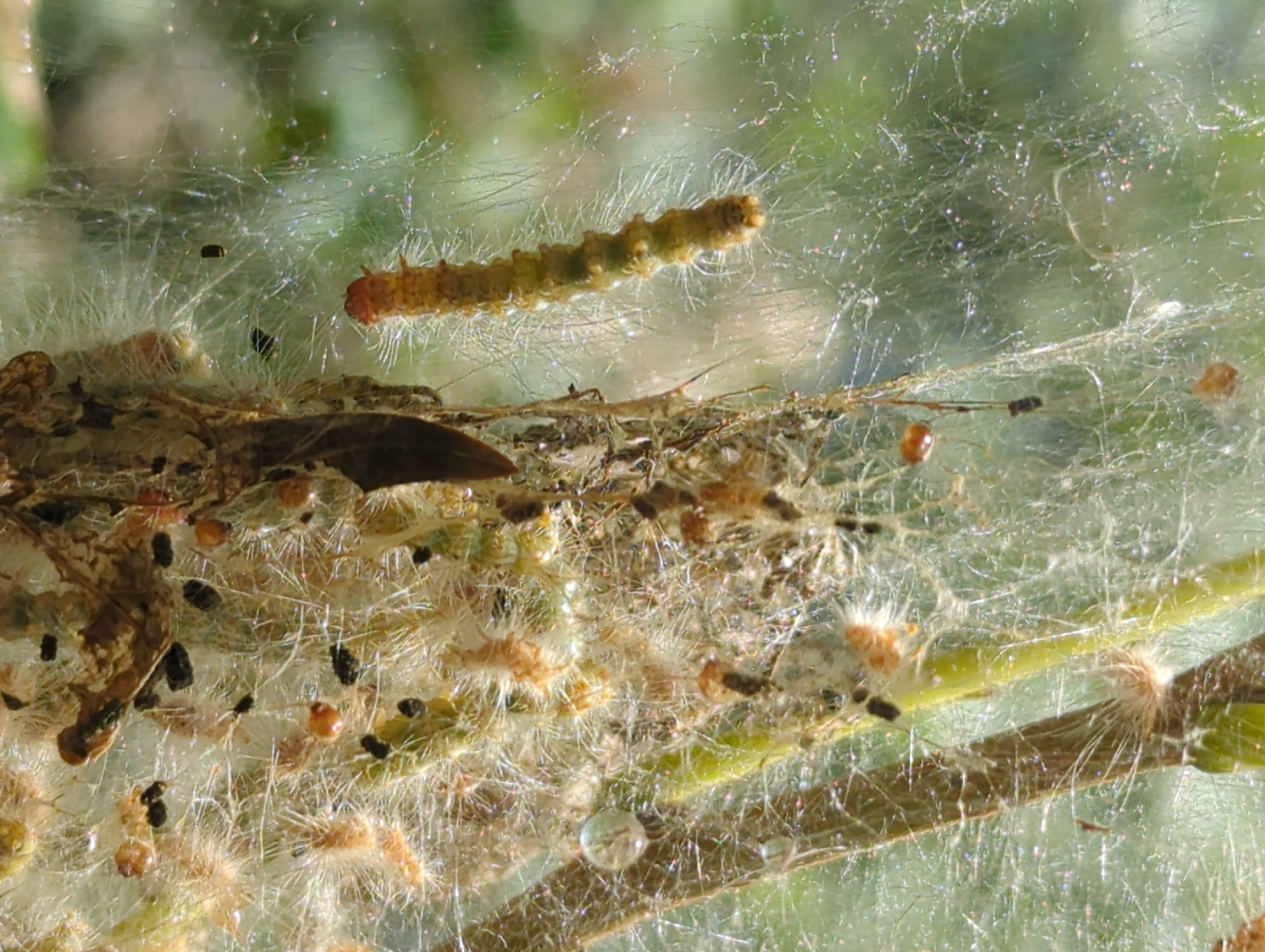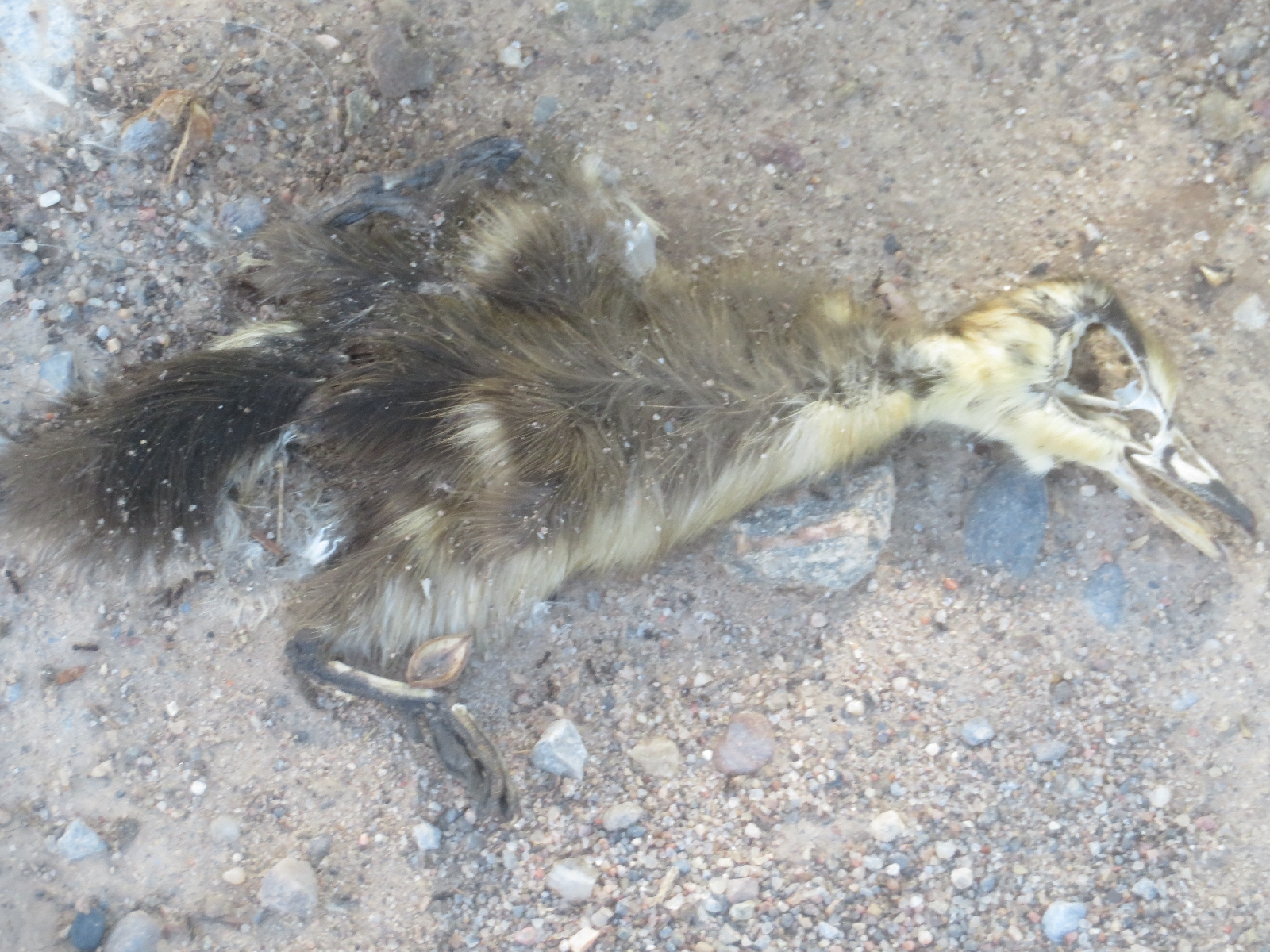"I
went to the woods because I wished to live deliberately, to front
only the essential facts of life, and see if I could not learn what
it had to teach, and not, when I came to die, discover that I had
not lived." Thoreau
What is danger? Is Nature dangerous? Maybe just unknown? What is safety, and what is that price? This snake sunning itself on a path is not dangerous. In fact it is stunningly beautiful. Being ignorant of snakes doesn't increase safety. But experience is necessary.
I'm not sure quite what this young rabbit was doing out of the safety of a burrow in the middle of the day but it seemed quite fearless. To a rabbit, there must be a lot more danger in the Bosque, but it doesn't seem to deter the rabbits, apparently. When the plants along the ditch are mowed, we often will see nests of small mammals disturbed. This often attracts coyotes and other predators.
This tussock moth is avoided because to people it could be venomous, but probably isn't. The fuzz is more likely to be a camouflage to look like the head of a grass stalk.
A Mississippi kite is more likely to munch on insects than rabbits and they are attracted to the cicadas in the area at the moment. They seems to appear by magic when circumstances are just right. the numerous grasshoppers are quite a banquet to small raptors that can fly close to the ground.
Snowy egrets fill the same niche as herons and I notice they appear when the trout are stocked. Many fish eating birds like to be around when the water levels expose the best spots of feeding. They are very fond of fish that are in new surroundings and don't know the best places to hide yet. Some pictures are very blurry, but the old saying is right "the best camera to take a picture is the one you have with you"
Normally double breasted cormorants prefer to dive for their food. This avoids the competition from those birds that ambush fish from the shore or shallow water. However, they are not adverse to making things easy for themselves on occasion and wait for the food to swim to them when the water level is low.
Spiders come in all shapes and sizes with many different niches to fill. During the hottest parts of the year the most active spiders seem to predominate. While this picture is too poor to show what species, this is a typical spider, with opposing fangs. The bold jumping spiders are more usually seen round about now.
Lizards like this Chihuahuan Spotted whip tail are constantly patrolling the leaf litter for insects. This one has found a recently died cicada. The lizard is transporting it to a safer location for consuming. The tough exoskeleton will likely need a bit of work to dismember.
The flame skimmer dragonfly. The adults are winged, but the juveniles are aquatic. This concept is used in nature to prevent competition and allows more animals to share a space. Ironically, the juveniles will feed on each other, so the mother has to lay the eggs as spread out as she can.
Competition for a sparse resource underlies many concepts in biology. Insect specialization is also part of this. This beautiful insect is the dog-bane beetle and not only feeds only on the dog-bane plant, but also sequestered those normally toxic alkaloids to prevent predation by other animals. By exploiting a specific niche, an ecosystem can become more diverse and resilient to change, at the cost of yoking together different species and losing individual autonomy.
The summer in Corrales produces many large and strange insects like this longhorn flower beetle. This huge specimen sniffs out odors from distressed plants to feed on. There are many carcasses of beetle about, as they fall prey to stress and diseases themselves.
as well as dragonflies, there re many other predators such as bee assassins and robber flies. These flies are much more muscular that the dragonflies and often catch insects as large as themselves.
In our dry and desiccated environment it can be hard to appreciate the variety of fungi that exists in the bosque. Most of these are not palatable or that impressive. It is worth a pause to remember that humans and fungi are closer in evolution that humans and plants. This species, Battarrea. It is really a sort of puffball, but looks nothing like one.
This also looks nothing like a mushroom, but is a type of slime mold, but so little is known about this type of life form, that few are experts on them.
This is the New Mexico state insect, a tarantula hawk wasp. While many know these wasps hunt spiders, few know that they also pollinate flowers.
This snake was a Eastern yellow bellied racer. A rather rare snake for Corrales, someone had killed it on the side of the path. Interestingly, a coyote came and ate the remains, then it marked the territory with scat before leaving.
Web-worms are a caterpillar who work as a community for their mutual benefit. The webs prevent attacks from wasps and ants who often investigate slow moving insects.
Mantis actually exist in many forms, but this one is probably released by gardeners to prevent insect attacks to expensive rose plants.
Katydids are large insects that feed on the leaves of the large trees. They blend in perfectly among the large leaves. But when you change the background they can stand out.
In many parts of the Loma Larga road in Corrales you can see yellow spaghetti on the weeds. This is a parasitic plant called Dodder that is transported about in agricultural seeds. It is studied by biologists trying to understand how plants sense their environments.
There are many red ants and red ant species in Corrales. They are all hunting for ground nesting bumblebees to parasitize, They are armed with formidable bristles that stave off attacks from harvester ants whose domain they interact with frequently.
The bosque has not had many ducks this season compared with past ones. This likely has something to do with the low water levels making ducklings easier to see. Young birds face high mortality from a variety of dangers, including avian flu. Even thought ducks visit often but never stay, they only visit because they are not harassed. Much like the people who live here.
The Corrales bosque had many hidden wonders lurking in these weeds. Not all are beatiful. The variety of the expected and the unexpected is truly amazing. This turtle has just returned from laying eggs. Past years most nests were destroyed by raccoons and skunks. This year there are noticeably fewer mammals, allowing these reptiles to thrive once again. What this environment has to teach will be diferent for all of us, but no doubt the lessons are worth learning.























No comments:
Post a Comment